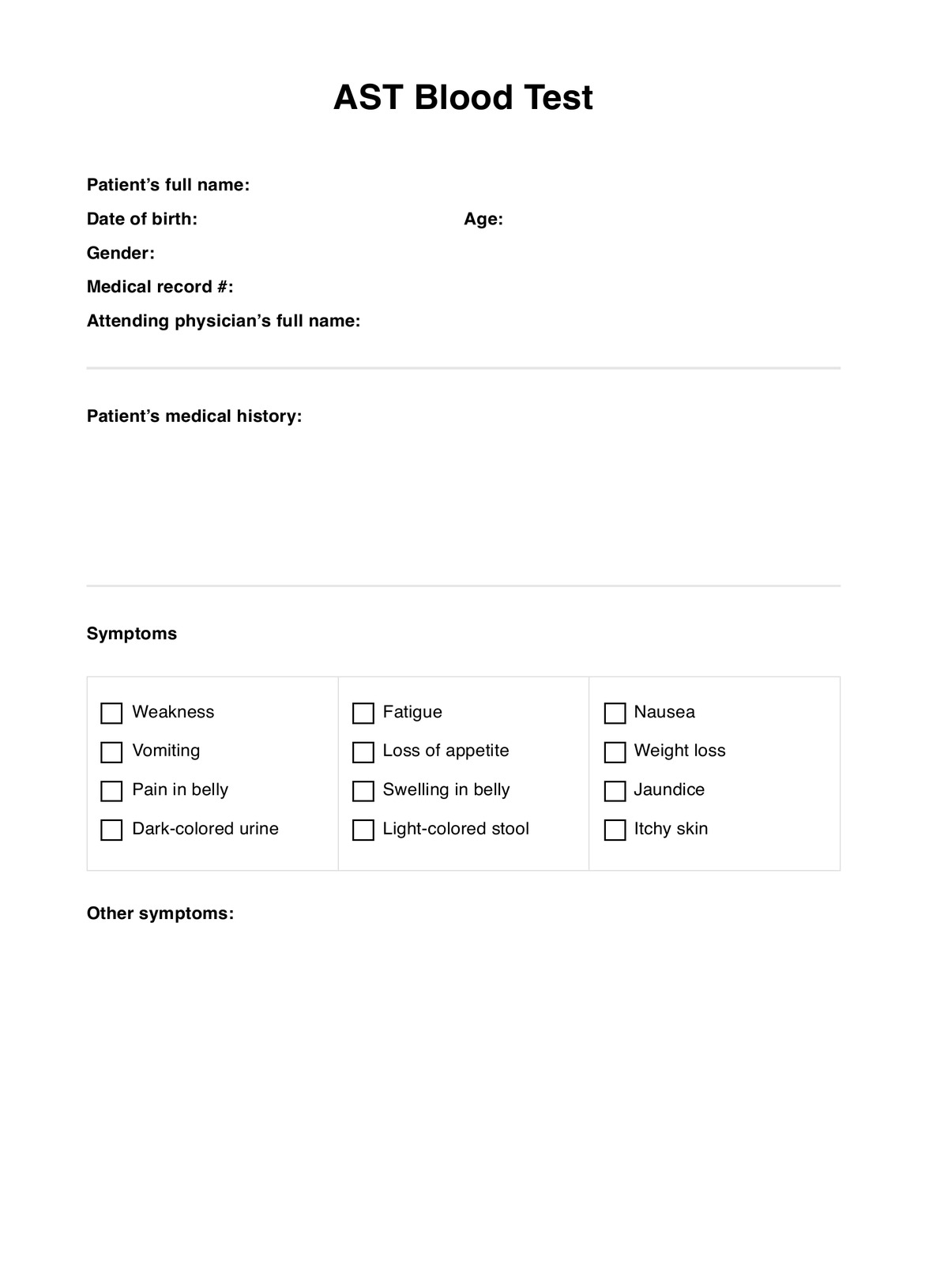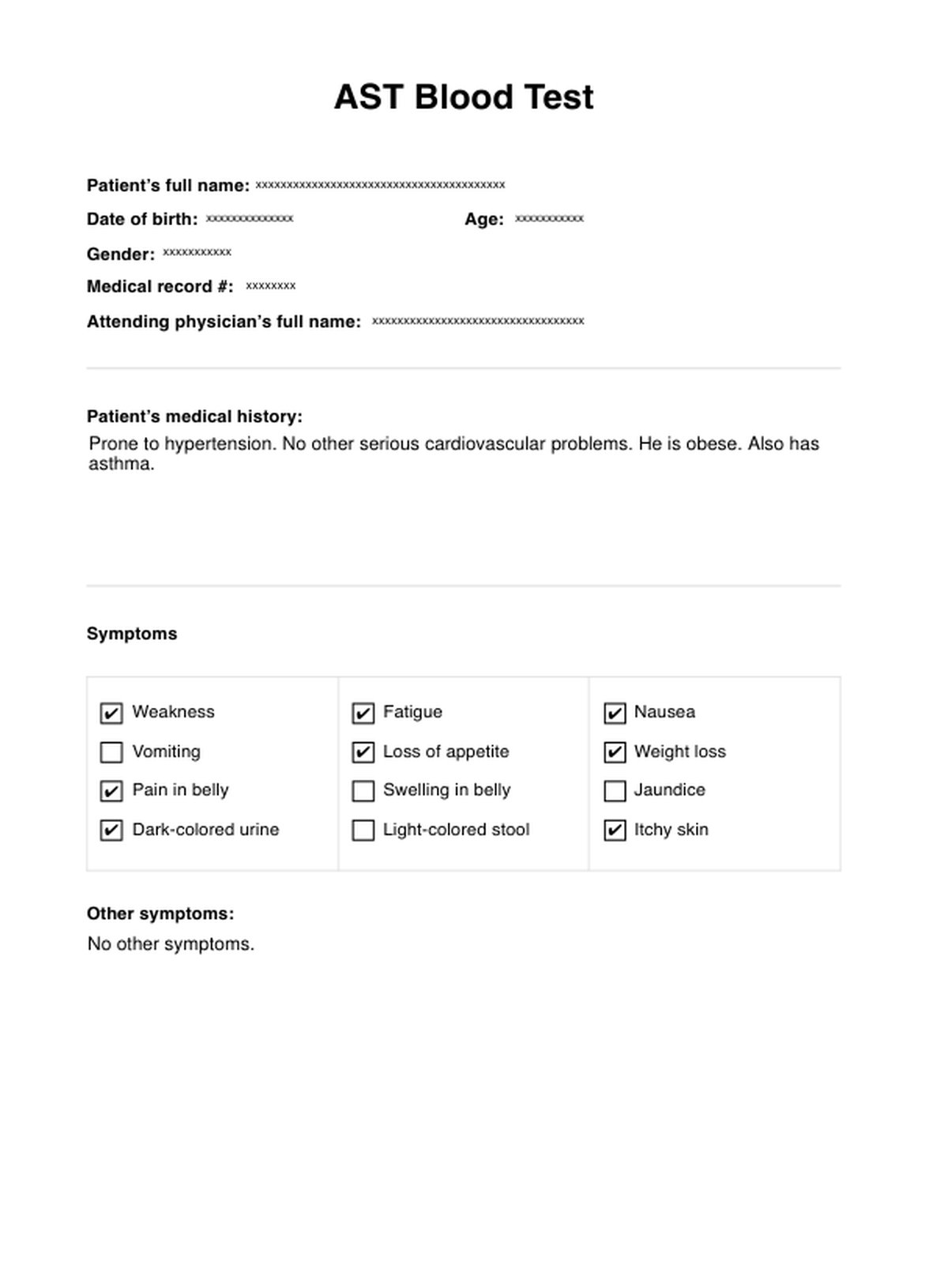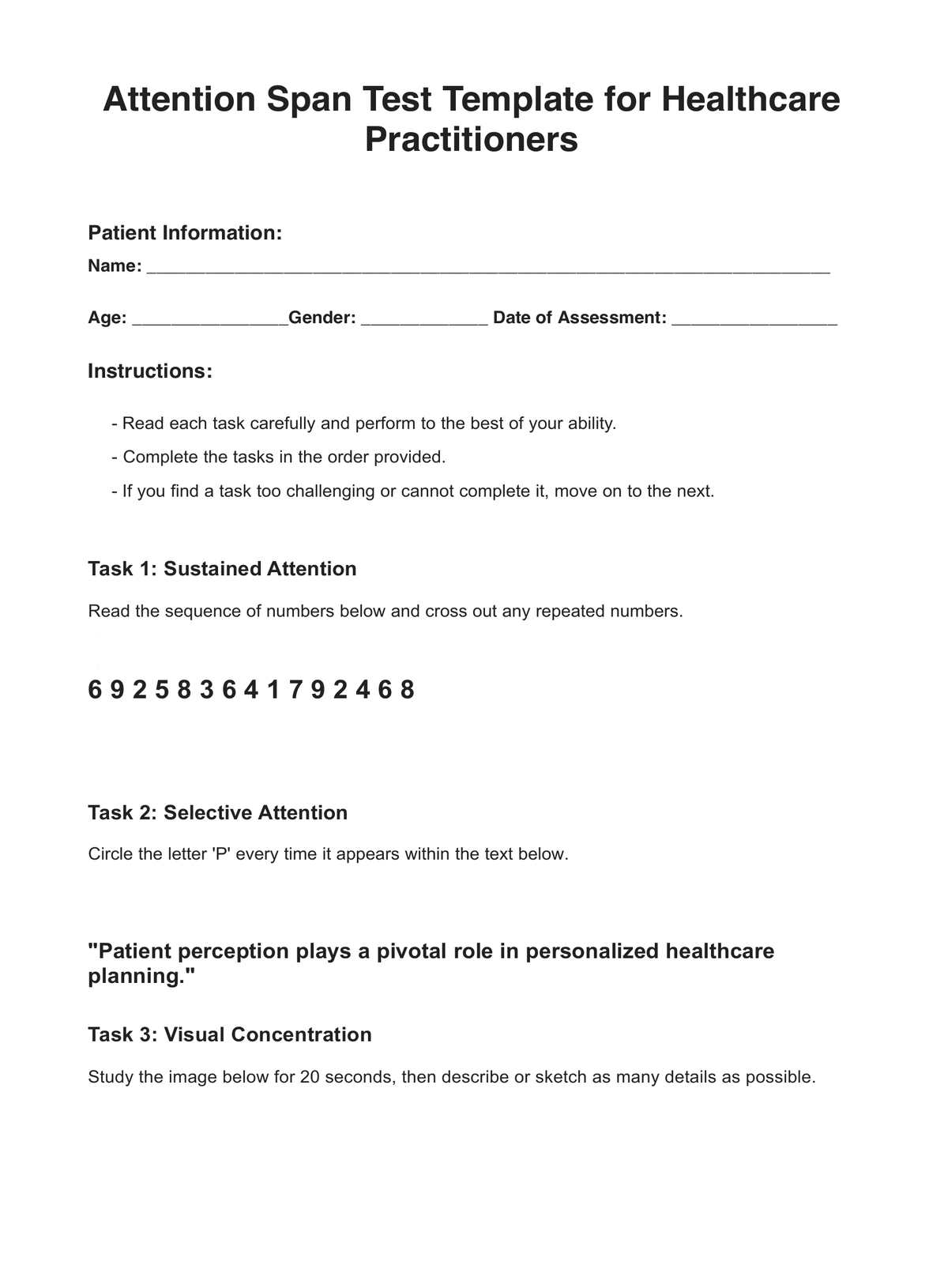AST Blood Test
Learn what an AST Blood Test is and download our AST Blood Test Results template.


What is an AST Blood Test?
An Aspartate Transferase Blood Test, also known as an AST Blood Test, is a medical examination designed to measure the levels of Aspartate Transferase in the bloodstream. Aspartate Transferase, also referred to as Aspartate Aminotransferase, is an enzyme present in various parts of our bodies, including the liver, pancreas, heart, kidneys, brain, muscles, and tissues. Its primary function is to assist in amino acid metabolism and other vital bodily processes.
When organs such as the liver are damaged, they release Aspartate Transferase into the bloodstream. Therefore, healthcare professionals conduct AST Blood Tests to assess individuals suspected of having liver, heart, or muscle problems. The presence of Aspartate Transferase in the bloodstream indicates potential damage to these organs, likely resulting from an underlying condition. Hence, AST Blood Tests are crucial in diagnosing liver, heart, and muscle conditions.
It is important to note that AST Blood Tests alone cannot diagnose specific problems. Instead, they serve as the initial step in the diagnostic process for various conditions related to the liver, heart, muscles, and more. The findings from these tests provide a foundation for further examinations necessary to determine the specific conditions affecting the patient.
AST Blood Test Template
AST Blood Test Example
How are AST Blood Tests conducted?
AST Blood Tests are typically performed when a patient experiences the following symptoms:
- Fatigue and weakness
- Nausea
- Loss of appetite
- Unexplained weight loss
- Abdominal pain or swelling
- Jaundice
- Dark urine
- Pale-colored stool
These are signs of liver damage or an underlying liver condition. Since the presence of Aspartate Transferase in the bloodstream is considered a sign of liver damage, this is one of the go-to blood tests when examining patients for liver-related issues.
While it’s common for this blood test to point to liver problems, it can also help diagnose other conditions.
Before scheduling an AST Blood Test, healthcare professionals must ask them about any underlying conditions they are confirmed to have and if they take certain medications. They will also ask them to fast for ten to twelve hours before the test.
Here is the procedure for conducting AST Blood Tests:
- A healthcare professional will assist the patient in sitting comfortably.
- They will apply a band around the upper arm to enhance blood flow in that area.
- The healthcare professional will cleanse the intended blood draw site with an antiseptic wipe.
- Using a needle, they will extract a blood sample from a vein in the patient's arm.
- The obtained sample will be sent to a laboratory for analysis.
- The results will be carefully documented for reference.
After conducting an AST Blood Test, healthcare professionals will conduct other tests to narrow down the patient's potential problem and then combine and interpret all results before making an official diagnosis.
How AST Blood Test results are interpreted:
The normal ranges for Aspartate Transferase levels in the bloodstream are:
- For men: 14 to 20 units/L
- For women: 10 to 36 units/L
- For children: 10 to 40 units/L
If the Aspartate Transferase level goes beyond 40 units/L, they have an elevated level of Aspartate Transferase. In the case of children, it’s also a sign of liver inflammation.
If the results show Aspartate Transferase levels two to three times higher than the normal count, a healthcare professional will consider that a mild elevation.
If the results show Aspartate Transferase levels above 1000 units/L, they will consider that a severely high elevation and a sign of potential liver injury or hepatitis.
Elevated levels of Aspartate Transferase can point to the following problems:
- Liver damage due to alcohol
- Cholestasis (stagnation of bile)
- Hepatitis (liver infection; it might even be chronic)
- Liver cirrhosis (the scarring of the liver)
- Liver cancer
- Heart damage
- Kidney damage
- Bone damage
- Muscle damage
The next step would be to conduct a more thorough patient examination to determine their specific condition.
When is it best to conduct an AST Blood Test?
Here are the times when AST Blood Tests are usually conducted:
If a patient has symptoms of liver-related problems
As mentioned earlier, AST Blood Tests are one of the go-to blood tests when patients present themselves with symptoms like dark-colored urine, light-colored poop, jaundice, loss of appetite, nausea, fatigue, and more.
These are all signs of potential liver problems, so this test is standard. It’s the first step to a more comprehensive examination to diagnose patients.
Routine or mandatory check-ups
Some employers require their employees to undergo annual physical examinations. This blood test could be part of the examinations to check if a person is at risk of liver or heart problems.
This isn’t exclusive to workers. Some people schedule routine check-ups to update themselves about their current health status. They can request this blood test to check their risk of getting a liver or heart problem, and they can adjust their lifestyle to lower the risk.
Heart-related emergencies
While AST Blood Tests are standard when evaluating patients for liver problems, they can also be conducted to evaluate heart problems. This can be used to assess heart damage due to cardiac arrests quickly.
Monitoring patients
Once patients are officially diagnosed with a liver and/or heart problem, this blood test can be reconducted again to check if the implemented treatment is working and if there are significant changes in a patient’s condition.
Commonly asked questions
ATL Blood Tests specifically assess the amount of Alanine Transferase (ATL) in the bloodstream. Unlike AST, which can be found in other body parts, ATL is mostly found in the liver. These blood tests are often conducted together when checking patients for liver problems.
Besides ATL Blood Tests, healthcare professionals can conduct ALP Tests, GGT Tests, Serum Bilirubin Tests, and Prothrombin Time Tests.
It’s possible to feel mild discomfort and bruising in the spot where blood was drawn. Besides those, there’s nothing too serious to worry about because AST Blood Tests are generally safe. Antiseptics are even used before healthcare professionals draw blood.



















-template.jpg)






























































































